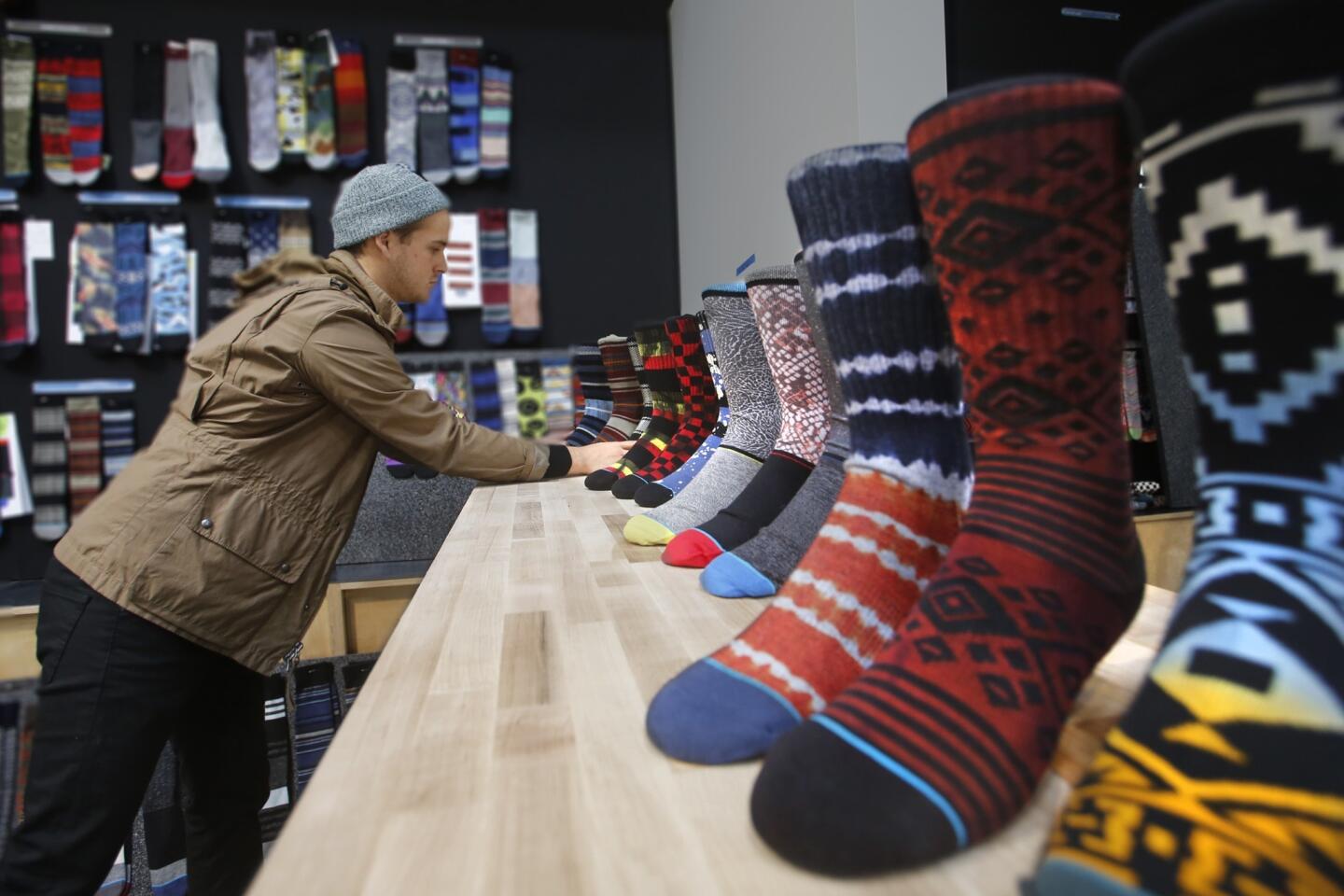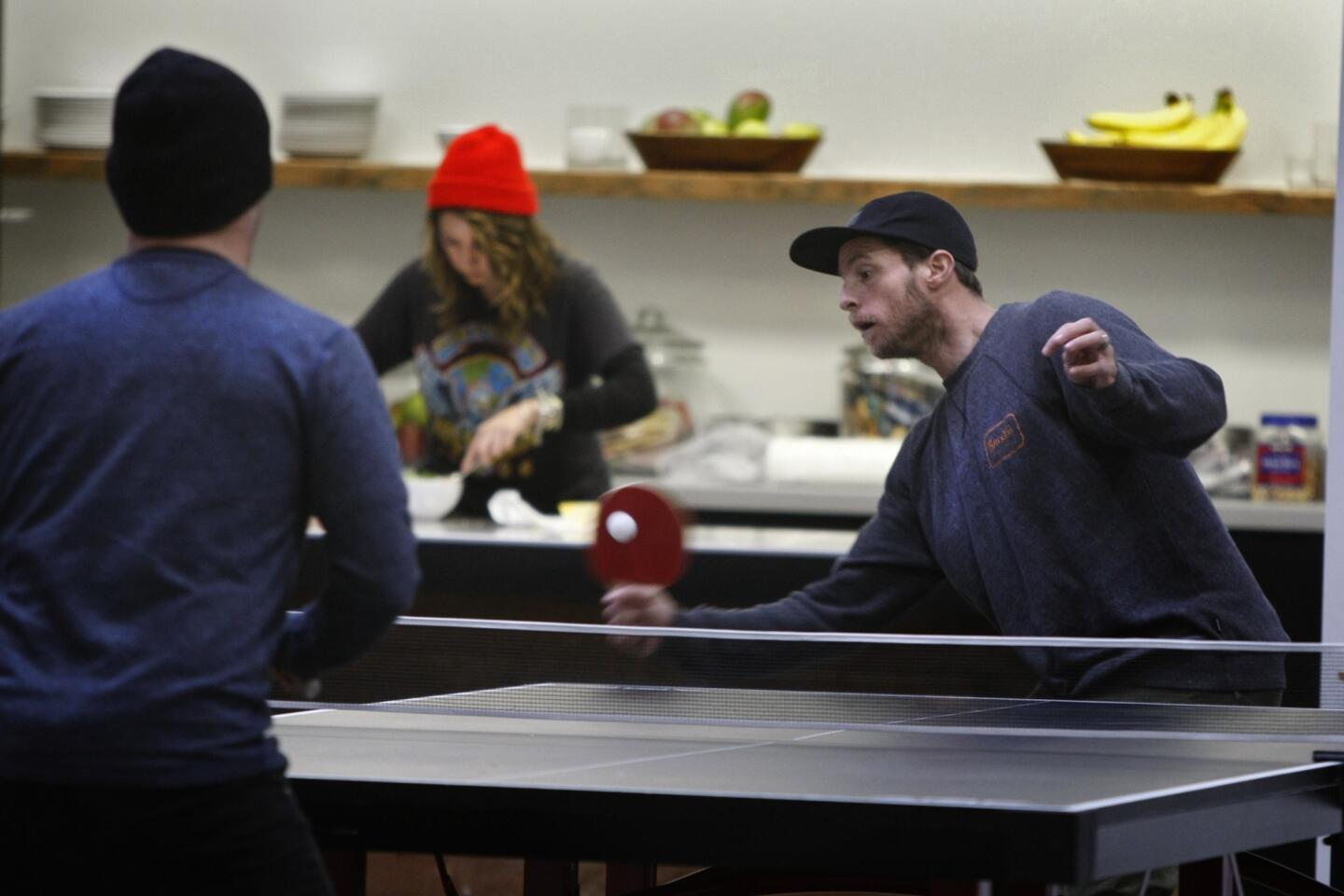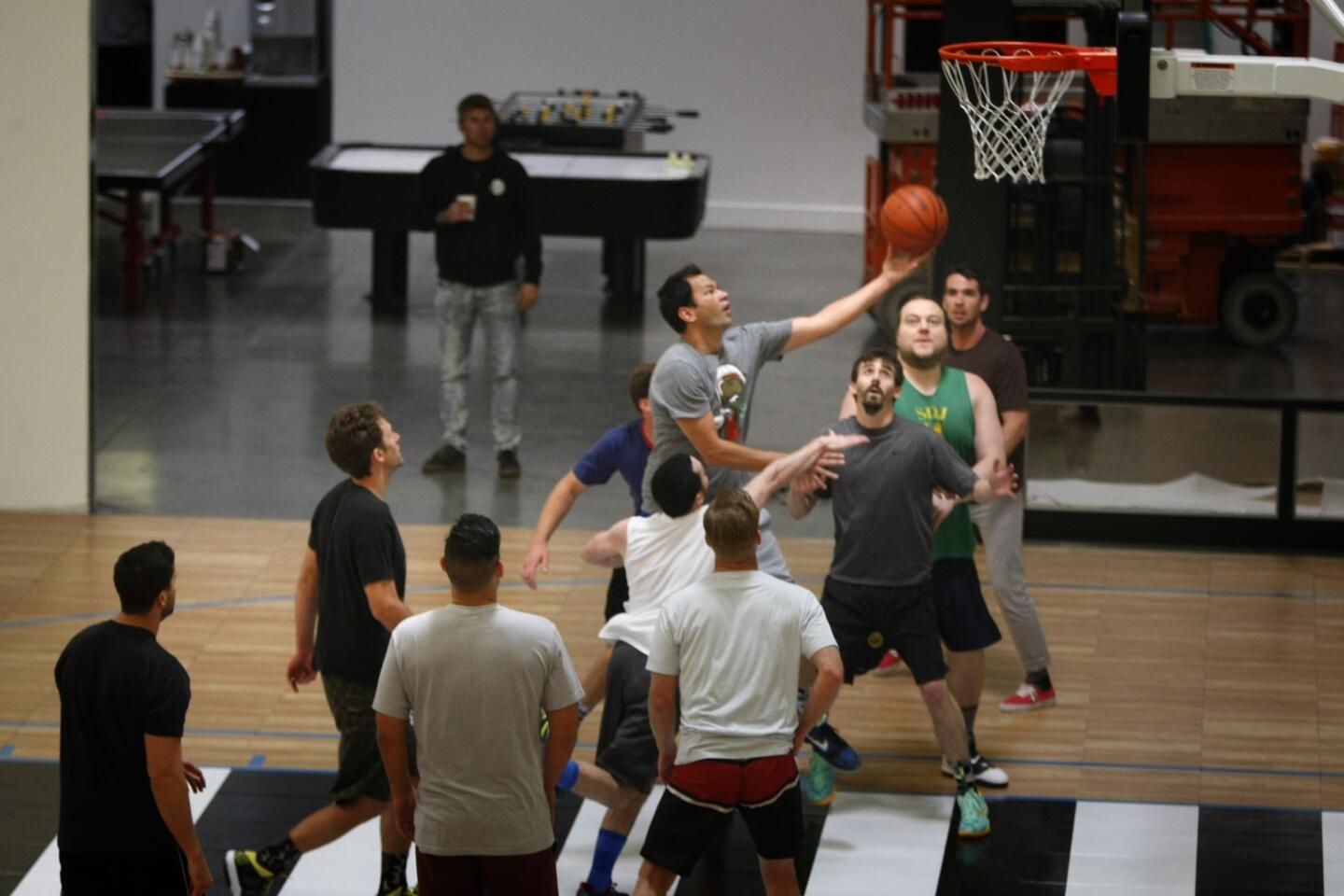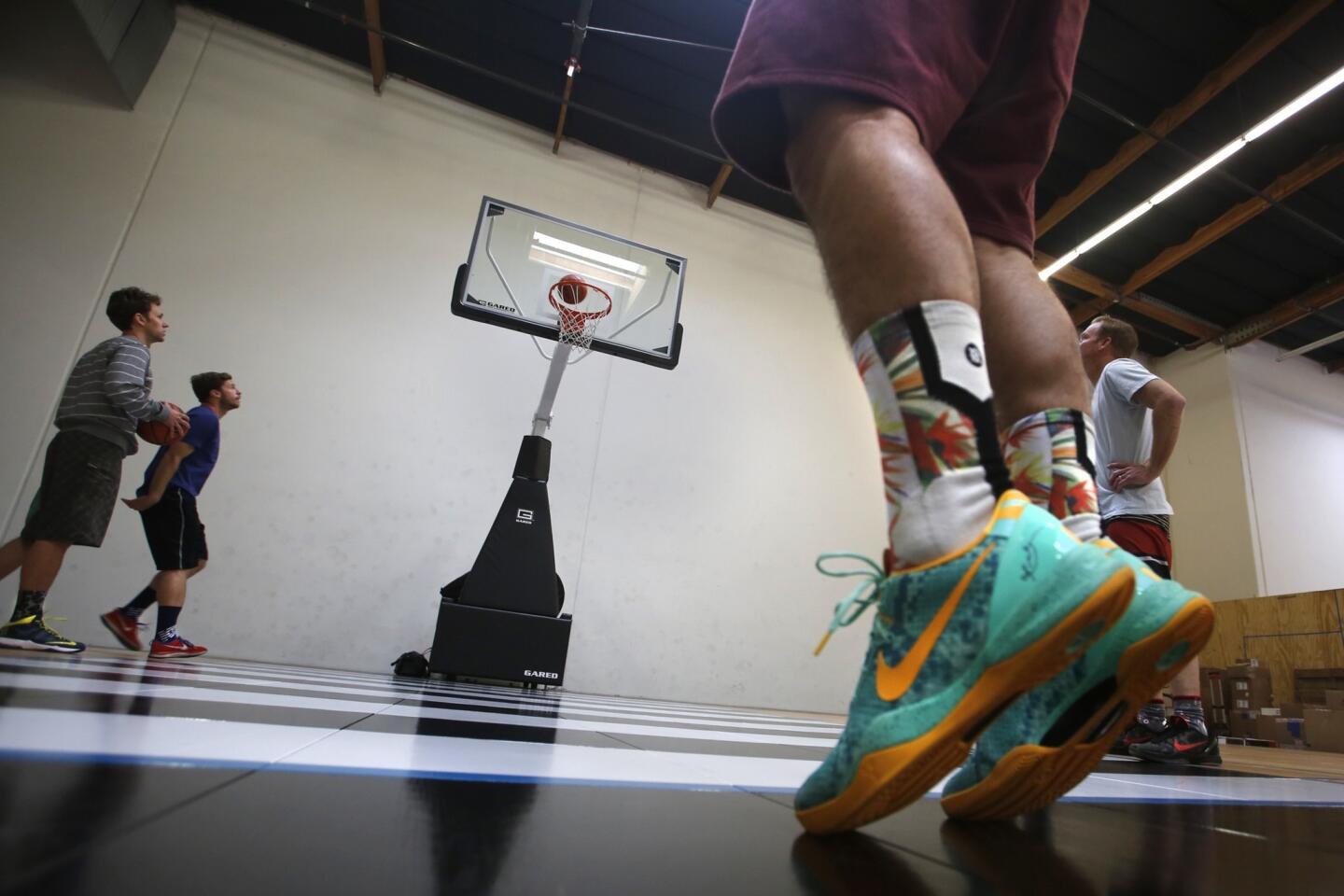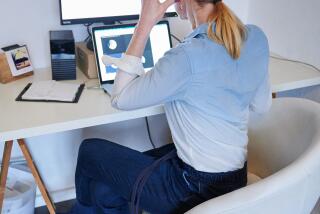Bit by bit, a more fit workplace
- Share via
Nearly all of us need to make more time for fitness. Finding that time, though, can seem impossible.
But what if you could wedge that workout in at work? If it sounds far-fetched (or a great way to get yourself fired), listen up.
Dr. James Levine, an obesity expert at the Mayo Clinic, says Americans don’t need to log more time at a gym. Instead, they need to banish their sedentary ways by incorporating easy bursts of activity from dawn to dusk.
FOR THE RECORD:
Workplace health: In today’s Saturday section, an article about exercising during the workday had listed Fitbit’s the Force as a recommended fitness tracker. The company announced after the section had gone to press that it is recalling the wristband device after complaints about skin rashes and burns.
He calls it NEAT fitness, which stands for non-exercise activity thermogenesis. In layman’s terms, it means cranking up the body’s calorie-burning abilities by weaving in near-constant movement — such as standing, walking, even pacing — at every opportunity. Becoming a body in motion that stays in motion could help you burn 500 or more extra calories a day. Combine that with smart food choices, and we could be well on our way to reversing the nation’s ever-expanding waistline.
And Levine believes the best place to start is in the workplace.
If you’re rolling your eyes, you might be guilty of what Levine calls “1930s thinking, to see employees [and the workplace] as merely tools of productivity.” But “the really cool companies” — Google, Yahoo, Apple — “take the health and the happiness of their employees seriously,” Levine said.
It’s not just for altruistic reasons, of course. It’s easier to keep health costs in line when employees are healthier, and a healthier workforce is a more productive workforce, he said. “A healthy workplace is the way of the future.”
Such a future might resemble the San Clemente headquarters of Stance, an upscale sock company that tailors its line to Southern California’s snow, skate and surf culture.
Chief Executive Jeff Kearl says the 4-year-old company has spent more than $100,000 on employee perks such as a basketball court, a skateboard half-pipe, game tables and showers. A chef prepares healthful breakfasts and lunches. (On a recent Friday, employees rolled in to an array of freshly blended juices and homemade yogurt. Lunch revolved around a crunchy kale salad.) A gym, personal trainers and classes are coming shortly.
And it’s not unusual for employees to clear out and head for the beach (just up the street) when the waves are just right.
“It may be hard for people to believe, but we have zero abuse,” said Kearl, whose office runs by a “freedom and accountability” philosophy that loosely translates as: Just get your work done, OK?
Not every company is run like Kearl’s or will hire the likes of a Levine to revamp their culture and facilities to make health and fitness a priority. So we asked Levine to help us come up with some ideas to try now. For free.
We realize all these ideas won’t work for you.
But maybe a third of them will. And that would help you meet the U.S. Department of Health and Human Services recommendation that adults get at least 150 minutes a week of “moderate-intensity exercise” — the equivalent of walking at a pace of 20 minutes per mile.
If you have a suggestion to add to our list, let us know: Tag us on Twitter and Instagram using the hashtag #LATFit and #PedometerWars (See No. 28).
